Rabbit breeding - interesting, profitable and profitable occupation. This type of activity in the household is very popular. Rabbits are characterized by high precocity and growth intensity, increased fertility and the ability to multiply throughout the year. They unpretentious at the content in the cells, they are well adapted to the existing conditions, fully pay for the food spent on them. Breeding and caring for animals is not a difficult task if knowing the most important thing about rabbits. In this article, you will learn where to start.
Table of contents
- The biological and physiological characteristics of rabbits for beginners
- Rabbit breeding: where to start, the choice of breed for breeding - meat or skin
- Home rabbit farm: conditions of detention, cultivation and care
- Growth and development of rabbits
- What rabbits eat, proper feeding
- Breeding characteristics of rabbits - how to maintain, care and feed
- Disease prevention, vaccinations
The biological and physiological characteristics of rabbits for beginners
Rabbits are born blind, naked and completely dependent on the mother rabbit. Feed on only milk. By the 10th - the 14th day of the rabbit eyes open, by the 16th - the 20th they already leave the nest and begin to taste adult food.
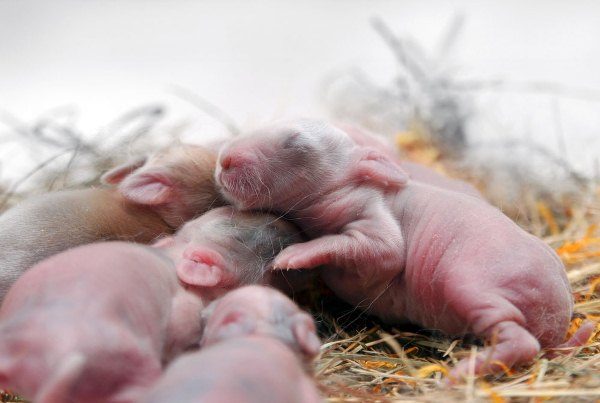
At the age of 1 month, babies can go without a mother. By this time, their full development reaches their primary hairline and there is a change of milk teeth to indigenous ones. Newborn rabbits have 16 temporary teeth. From the 18th day of life their gradual replacement with permanent ones begins. Milk molars fall out on the 20-28 day. After the change, there are 28 animals in them, less often 26 (there may be no pair of small incisors in the upper jaw). By the age of 30, the live weight of rabbits increases 8-10 times.
Rabbits - true vegetarians. They like to eat green grass, in winter they prefer high-quality hay. With pleasure they gnaw the twigs of trees and bushes, eat grain, vegetables and fruits. In the conditions of home content in the diet of animals include animal feed in the form of nutritional and mineral supplements.
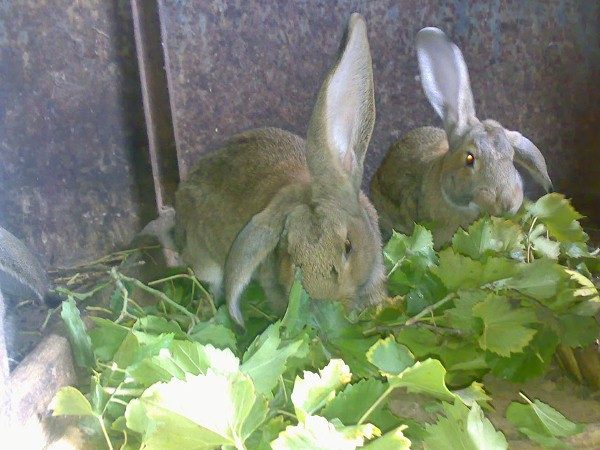
The digestive system of rabbits is the best fit for eating plant foods. Animal stomach, has the shape of a horseshoe bag. Gastric juice contains hydrochloric acid, pepsin, and lipase, which quickly dissolve food proteins, promote the digestion of fats, and protect food from rotting. Intestines 8-10 times the length of the body. The urine of rabbits is alkaline, contains a lot of nitrogen and sulfur. Daytime feces - dry and hard, night - soft and wet. A special feature of animal digestion is natural coprophagy.
Puberty of rabbits comes early. Animals of medium breeds are capable of breeding at the age of 3 -3, 5 months, large - at the age of 3, 5 - 4 months. However, without harm to the health, growth and quality of the offspring, they can occur no earlier than 5-6 months, when the period of intensive growth ends. The final development of the body in rabbits ends by 8 months.
Females bring numerous offspring. In one litter is usually born from 6 to 9 rabbits. The maximum number of newborns is 18. Animals do not have a pronounced seasonal hunt. Females are fertilized throughout the year, every 5–6 days in summer, and 7–10 days in winter. Rabbits perfectly combine lactation and pregnancy, can take, care for and feed both their young and from another mother, if the age of the rabbits is about the same.
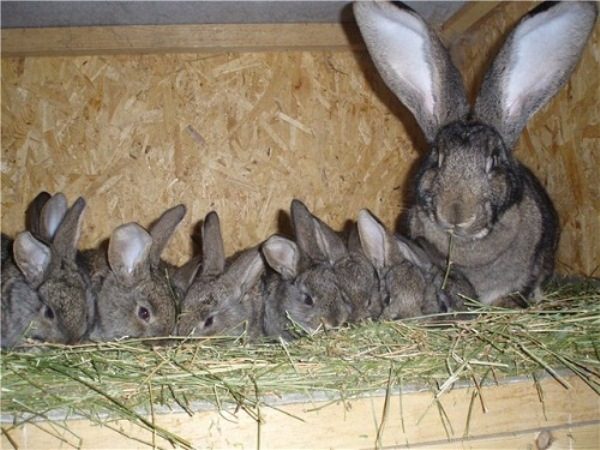
Animals perfectly adapt to living conditions in any climatic conditions, but are sensitive to excessively low and high temperatures, drafts, infections and polluted air. Rabbits live up to 10 yearsAfter 3–4 years, the reproductive capacity of females and males drops sharply, which necessitates a change in the producing composition. Especially valuable animals use 5 - 6 years.
Rabbit breeding: where to start, the choice of breed for breeding - meat or skin
Animals are bred for meat and skins.Down rabbit breeding is less common. Rabbit meat is tasty, nutritious and healthy.. It contains a lot of easily digestible protein, 90% of which is easily digested in the human body. Gentle fat does not freeze and does not leave an unpleasant taste in the mouth. Rabbit meat is used in dietary and medical nutrition.. Dishes from the rabbit belong to the delicacies worthy of the attention of these gourmets. The most tender meat is obtained from broilers, which are slaughtered at the age of 70 - 75 days upon reaching 2 kg.
The following animal breeds are suitable for meat breeding:
- flandre;
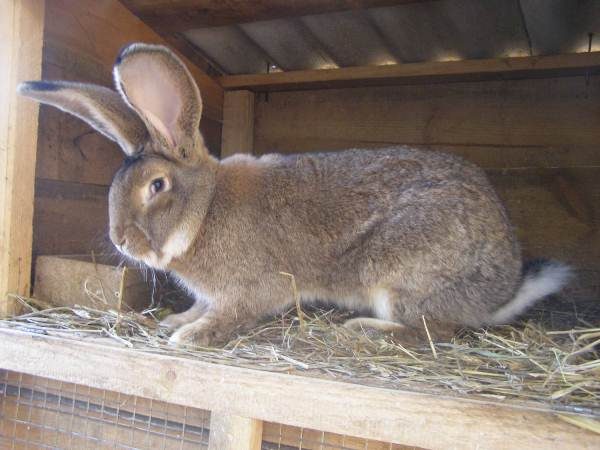
- french ram;

- Californian;

- white New Zealand;
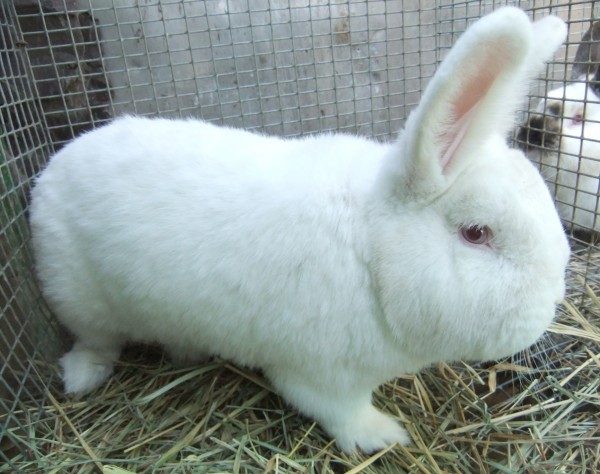
- red New Zealand.
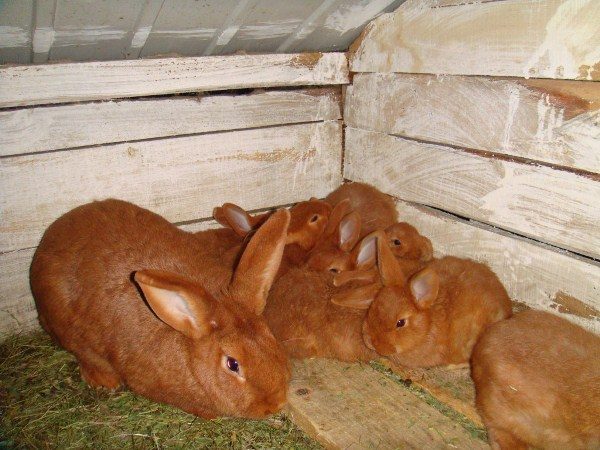
Listed youngsters characterized by rapid growth, a good set of live weight, optimal feed costs for growth. Commercial products with intensive fattening receive by 4-6 months, the weight of rabbits by this time. can reach 5 kg.
Animals are raised for the sake of skins.. They are used in light industry for caps,fur coats and in the form of finishing hoods products made from synthetic and natural materials. Shoes can also be trimmed with rabbit fur. It is also used to imitate more expensive mink, fox, sable, cat, etc.
Quality skins receive from animal breeds:
- Soviet chinchilla;
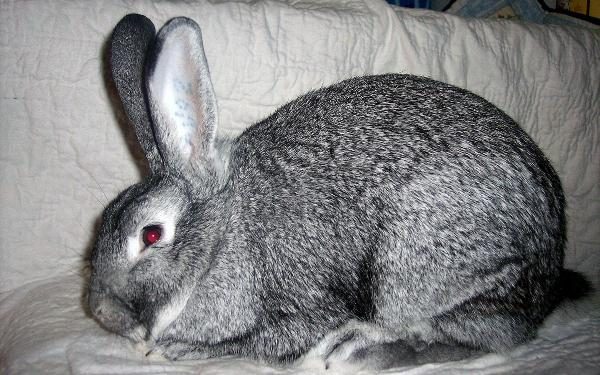
- gray giant;
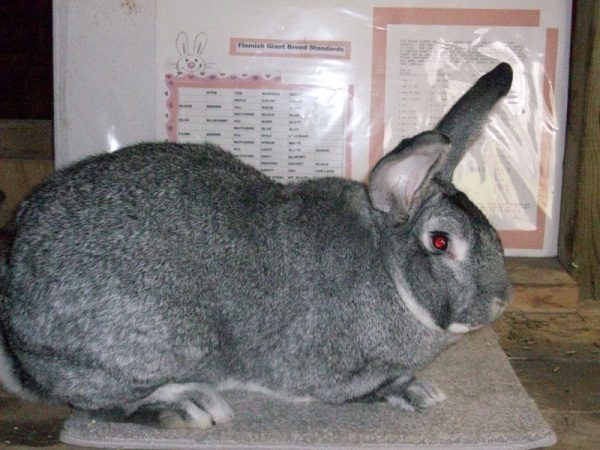
- white giant;
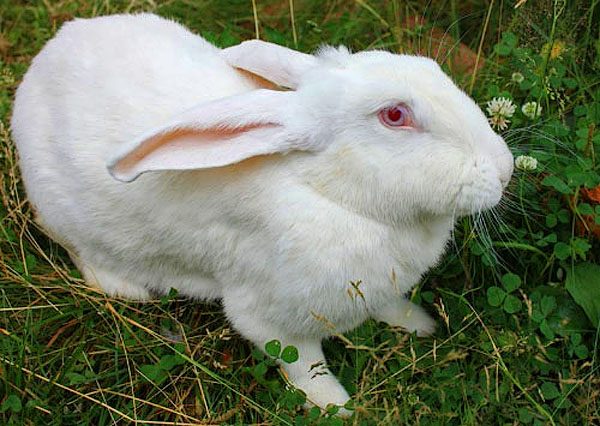
- silver;
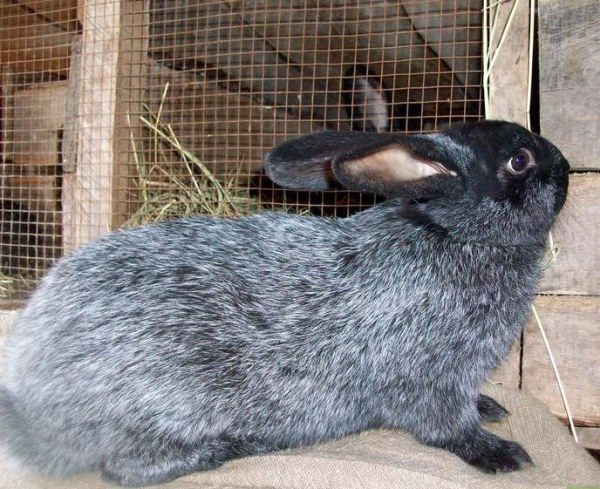
- Viennese blue;
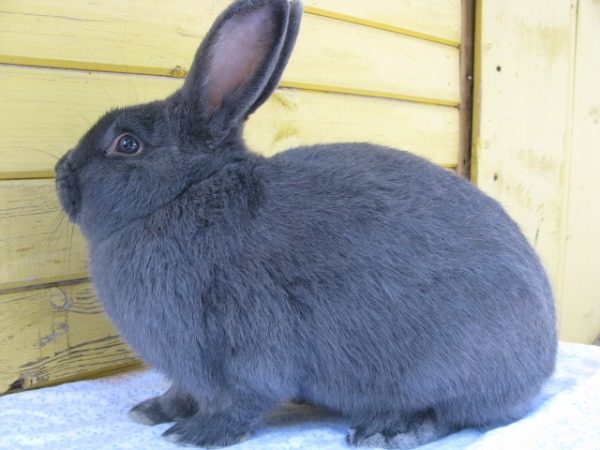
- black brown;
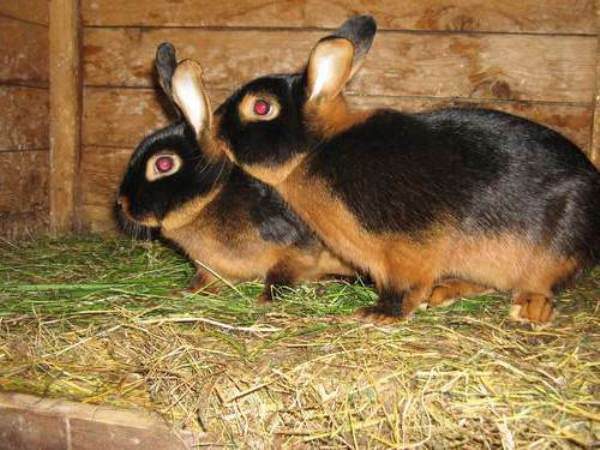
- butterfly;
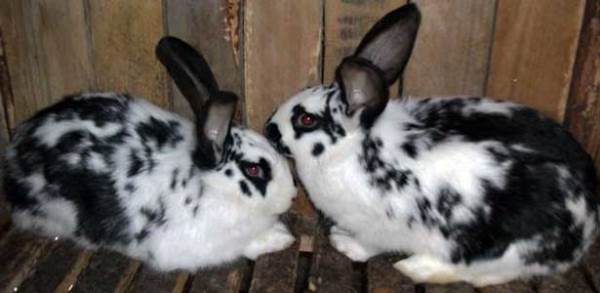
- Russian ermine.
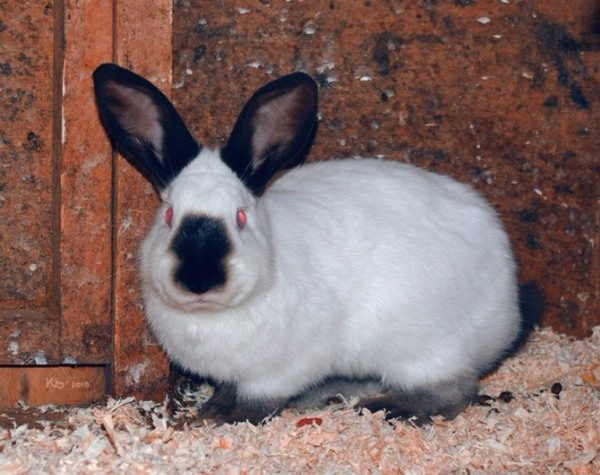
Animals distinguishes thick, soft and beautiful fur with a short awn and a strong pad. From rabbits receive large valuable skins. Slaughter is carried out after 6 months, when the first adult molt ends.
When choosing animals for the tribe pay attention to the health and the constitution of animals. Appearance should correspond to the description of the breed. The male must be energetic, strong, well developed., with a pronounced male type. You should not choose small, sluggish, passive, lagging behind in the development of animals. The criteria for selecting females are more diverse. Expectant mother should have a light head, strong, but not rough bones, straight back, wide ass, resilient unresisting belly, strong legs. She should have at least four pairs of evenly spaced and normally developed nipples. This is a guarantee that she can feed and raise numerous offspring.
Home rabbit farm: conditions of detention, cultivation and care
In the conditions of personal farms, they practice both maintenance in the barn and street cage. Place under the rabbit houses choose a flat, protected from the prevailing winds, with natural or artificial shading. Rabbits do not tolerate overheating, drafts and do not like moisture, so you should immediately create comfortable conditions for the livestock. The approach to the site should be free to ensure the smooth distribution of feed and cell cleaning. Tribal bones and productive youngsters are kept in different sections, although on small farms this is almost arbitrary.Separately, they have a cage for sick animals and a cage for quarantine, where they will temporarily keep newly purchased animals, which cannot be immediately placed in the main herd.
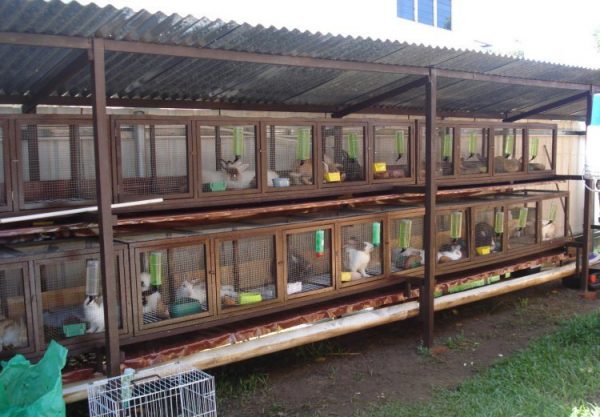
General recommendations for cell construction are as follows:
- Are considered the best cages made of metal mesh and wood. The back wall and the ends are made of boards, nailing parts without gaps, tightly to each other. Inside, the corners are sheathed with metal so that the rabbits do not spoil the cages. Mesh make part of the floor, front wall and optional door. For these purposes, suitable mesh netting and fine-mesh construction mesh. The size is chosen so that the animals can comfortably walk without falling into the cells with their paws. Part of the floor is made of solid boards.. This is a resting place for rabbits, they can fully relax there, lie down, gnaw a twig, etc.
- Roofing material is slate, ondulin, professional sheet. It is practical to make a roof with a slight slope to the back wall so that rainwater can flow down if the cells are placed in the open air. The hinged and flip-up design makes it easy to clean the rabbit house when changing livestock.
- Feeders make removable or stationary, placed them on the front wall inside or outside the cells. Be sure to put and drinker, better automatic, so that rabbits have constant access to water.
- In winter, in extreme cold, the cells are warmed.. Use both improvised materials and building insulation. At critically low temperatures, the outside perimeter of the cage can be sheathed with foam, and the facade covered with grass mats. In regions where there is a lot of snow, you can simply enclose them in cells, but do not forget to remove it in the thaw. Will keep heat in cages and a plentiful laying from a dry leaf, hay or straw, sawdust.
- On small farms cells are arranged in one rowIf there are numerous livestock for convenience of maintenance, they are installed in 3 floors one on another. Under each tier have a tray for collecting feces, urine and feed waste.
Cages for animals make different, given the specification of the use of the premises and the needs of rabbits.
Cages for young
Baby rabbits after weaning contain groups in large spacious cells. Up to 3 months, animals are not divided by gender, then transplanted separately. Fetid, aggression-prone animals are isolated from the herd. Fattening and fur young contain 6-12 heads in one cage. Repair animals, intended to replace the production of the composition, contain 3 in one house. The living space for an ordinary rabbit should be 0.12 m², and for reproductive young animals - 0.17 m².
For the summer rabbits use a design with two grids on the back and front wall. In such a cage, young animals are comfortable and reliable, animals breathe fresh air and no harmful gases are accumulated inside. In winter, keep rabbits in a closed cage, grating only from the facade.
Mother Rabbit
For each female on a home farm, a separate cage is isolated. In her she lives and gives birth. Before the birth of cubs, housing is supplemented with queen cell. - a closed box with a manhole, in which the rabbit makes a nest. Make it out of wooden slats and sheathe plywood. The size of the box is 300 by 500 by 300 mm. Diameter of an opening 150 mm. The lid is made flip for ease of revision in the socket. The mother cells are located either inside the cage at the door level, or carried outside, providing easy access to the animal. In this imitation of a mink, it is convenient for the female to grow rabbits.They grow healthy, strong and strong, quickly gaining weight.
Mating cages
Special facilities for crossing animals at home do not exist. Everyone makes it easy - the female in the hunt for mating time is transferred to the male's cage. The whole process takes 10-15 minutes. Mating must be monitored. Immediately after its completion, the female is removed from the cage so as not to torture the male. After 5 days spend control knitting. If the rabbit does not allow the male to come to her, she is considered conditionally covered.
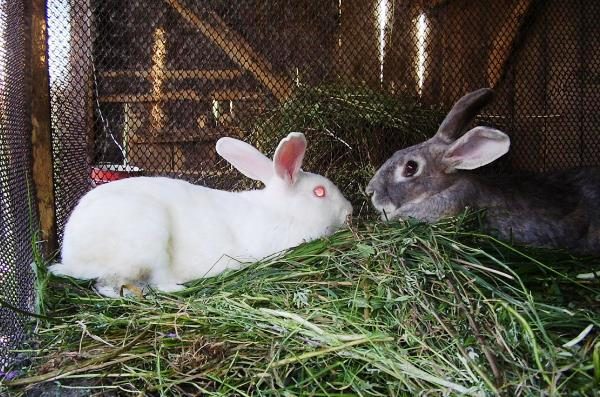
Caring for rabbits is the distribution of food and cleaning the cells from their waste. Feed set 2 or 3 times a day. Hygiene procedures combined with morning or evening feeding.. It is permissible to remove feces on the netted floor once a day.
Growth and development of rabbits
Rabbits give birth at night, lasting from 10 minutes to 1 hour. After the female eats the afterbirth and stillborn young. Ancestral activity causes a feeling of thirst, therefore the cells must be constantly waterso that the animal does not fill the lack of fluid due to offspring. The same situation may ariseif the mother’s body lacks vitamins and minerals.
Young rabbits can scatter babies, so you need to watch aroundbut do not interfere with the process. The rabbits outside the nest are folded manually. If the situation repeats, the animal is culled.
Females feed baby rabbits once a day, less often twice. Rabbits drink up to 200 grams. milk per day. The well-fed rabbits peacefully lie in the nest, the hungry squeak and try to get out of it. If they climb out of the nest before 14 days, it means that they do not have enough power. The maximum level of milkiness in the rabbit falls on the 20-25 day of feeding. The mother cleans the nest herself, without the need for a person to make adjustments there is no need.
Feeding females during lactation ad libitumIdeally, if the food in the trough is always there, the animal will choose when and what it needs. A mother will teach grown children to eat adult food.
The first selection of animals is carried out at the age of 2-3 months. They are evaluated according to the degree of development, compliance with the breed standard, health, and desirable traits. Bonding is inspection, comparison with regulatory indicators. Culve the sick, frail, weak, atypical animals. Rabbits with a rough and loose constitution are also subject to exclusion. For further breeding, the most promising young animals are left, the rest of the animals are allowed for meat and skins. The last revision of the future breeding composition is carried out in 6 months.

Rabbits grow rapidly up to 4 months. This is the ideal age for the slaughter of meat animals, since subsequently the profitability of feeding livestock drops sharply. To get the skins have to wait for an adult moult. In rabbits, this period is not bright. Usually animals molt from March to April, in autumn from October to November. In the summer there is a partial loss of the awn. The approximate period of slaughter of rabbits on the skins - after 6 months. Keeping marketable young for more than 8 months is not recommended.
What rabbits eat, proper feeding
A good fodder base is the key to the prosperity of the rabbit farm. Animals eat a variety of plant foods.. Green includes:
- meadow grass;
- wheat grass;
- sagebrush;
- corn;
- sainfoin;
- peas;
- chaff;
- burdock;
- yarrow;
- nettles;
- colza
Green mass is dried before distribution, never wet from rain. It causes digestive upset in animals, sometimes fatal.
For rough feed include:
- hay;
- grass meal;
- branch feed;
- dry leaf of fruit trees.
Hay harvested during budding, the best in composition are considered herbs and leguminous crops. From the branch feed, rabbits prefer aspen, willow, mountain ash, maple, acacia. From the garden - an apple tree, pear, raspberry, cherry.
The menu of succulent feed includes:
- fodder beet;
- potatoes;
- carrot;
- pumpkin;
- Jerusalem artichoke;
- cabbage;
- fruits.
Sugar beets are fed in limited quantities in a mixture with bran. Vegetables - seasonal culture, so the diet can be diversified throughout the year.
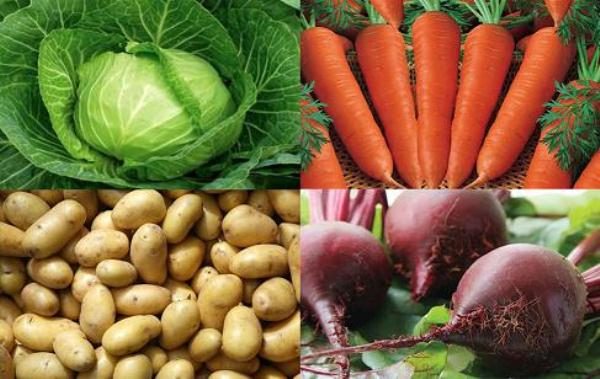
Need rabbits and grain feed. They willingly eat:
- oats;
- wheat;
- barley;
- corn;
- peas.
Additionally in the diet include bran, cake.
As a feed rabbit distribute:
- salt;
- a piece of chalk;
- meat and bone meal;
- blood and fish meal;
- milk;
- serum;
- yeast.
Provides a full ration and granulated feed. It is bought already ready in the markets or in specialized stores.Pressed lumps contain everything you need for a rabbit organism.
In one year a female with an average brood eats up to 1 ton of grass, juicy feeds 200 kg, hay 150 kg, concentrates 200 kg and mineral feeds 10-12 kg. The data may differ in one or the other direction, it all depends on the climatic conditions in the region, the breed of animals and the diet menu.
Breeding characteristics of rabbits - how to maintain, care and feed
The first time breeding animals are allowed to mating at the age of 5 - 11 months. Disposable females can be used at the age of 5 - 6 months. In healthy, strong, well-fed animals, the hunt manifests itself every 5-6 days, in the winter a little less, so it is easy for the breeder to plan the time of birth of the young. 2 weeks before the start of mating, increase the ration of protein and vitamin feed. Males are offered oats, milk, eggs, which increase spermatogenesis, and increase the activity of animals.By the time of mating, manufacturers should look sturdy, knocked down, in the body, but not plump.
Mating of animals passes quickly. In one cage, the male releases up to 2 ml. sperm. 20 minutes after mating, spermatozoa penetrate the female oviducts. Fertilization occurs 10 to 12 hours later.
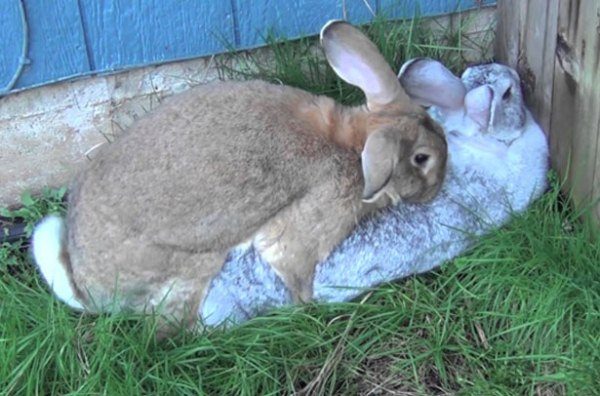
Pregnancy at rabbit lasts 26 - 35 days. By the time of their birth, the young reach a weight of 50 to 90 g. The mass depends on the breed and the number of rabbits in the offspring. In a lot of litters, baby rabbits are born small.
2 - 3 days before the rabbit, the rabbit becomes restless, runs around the cage, makes a nest and lines it with fluff. A sign of approaching labor are and the desolate belly of the female, as well as the swollen nipples in which the milk resides. At this time, they limit the giving of succulent fodder and offer hay to animals. A few days after caul, the diet is restored. Lack of milk can be stimulated by giving fruits and vegetables.
Rabbits can produce offspring 4 times a year.. When compacted okrolah combined with feeding - up to 6 - 7 times. Often, giving birth to animals quickly wear out, and they have to be replaced more often.
Disease prevention, vaccinations
Rabbits are susceptible to disease. Vaccination of animals helps strengthen the immune system and the body's resistance to infections. Vaccinated livestock sick less often, while outbreaks of disease never end an epidemic.
Vaccination against myxomatosis spend when young growth turns 28 days. Live vaccine B 82 is used. The form of administration is intramuscular injection in a dose of 1 die per head. Re-vaccination is done at the age of 120 days.
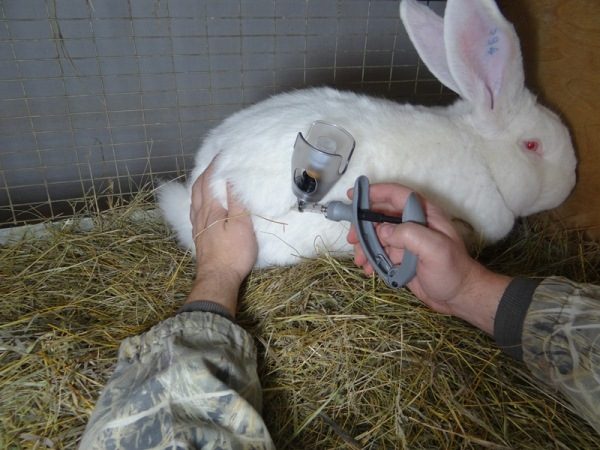
Vaccination against ARHD do when babies turn 45 days old. Use tissue hydroaluminium formul vaccine. 0, 5 cubes of the drug is administered to animals intramuscularly. At 6 months, the procedure is repeated.
Another option to save rabbits from disease is to use the associated vaccine. It works directly from myxomatosis and VGBK. Vaccinated rabbit do 45 days. Use 0.5 cubes of the drug per head.The form of administration is intramuscular or subcutaneous injection.
The fight against pasurellosis begins in 2.5 months. Give piperazine, which is injected through the oral cavity. The dose of the drug is 0.5 g per kilogram of rabbit weight.
In 3 months time comes take action against coccidiosis. Use Baykoks, Amprolium. Amprolium is diluted in a liter of water 1, 4 g of the drug. Dosage of Baycox - 1 cube per liter. Solder medicine at a time.
These activities can reduce the risk of developing contagious diseases and keep the health of rabbits throughout their lives.
Divorce and the cultivation of rabbits - a thing that delays. It is interesting and instructive to deal with them. For some, it becomes a lifelong passion. It is not difficult to learn everything. For beginners, the main thing is to try, understand, experiment. And then - everything will turn out.
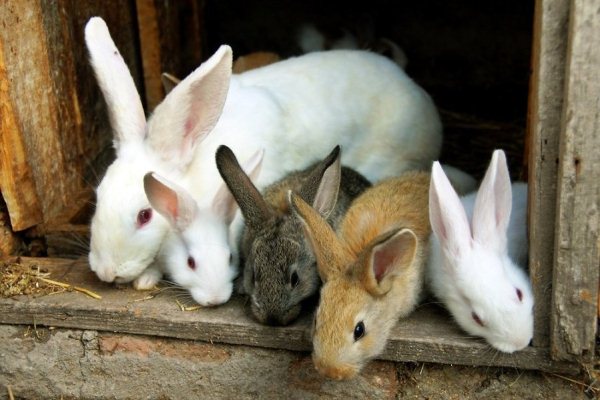
Hello! Very interested in your article. We are going to breed rabbits, but unfortunately we often have to leave home.For how long and how much feed can you leave the rabbits to do without a host? Which breed is better acclimatized in central Russia? When should I start to vaccinate rabbits? And how many individuals should be in the same cage?
Hello ! Good article everything is described in detail. Thank ! I will try to breed rats. Only one request, I state the cells with sizes publish.
The article is just great, clever, all lit up! But I still have a question. Is it possible to give knotweed and in what quantities?
Thank you, excellent article, everything is clearly stated. But I have one question. Is it possible to give knots of knotweed and in what quantities? Thank.